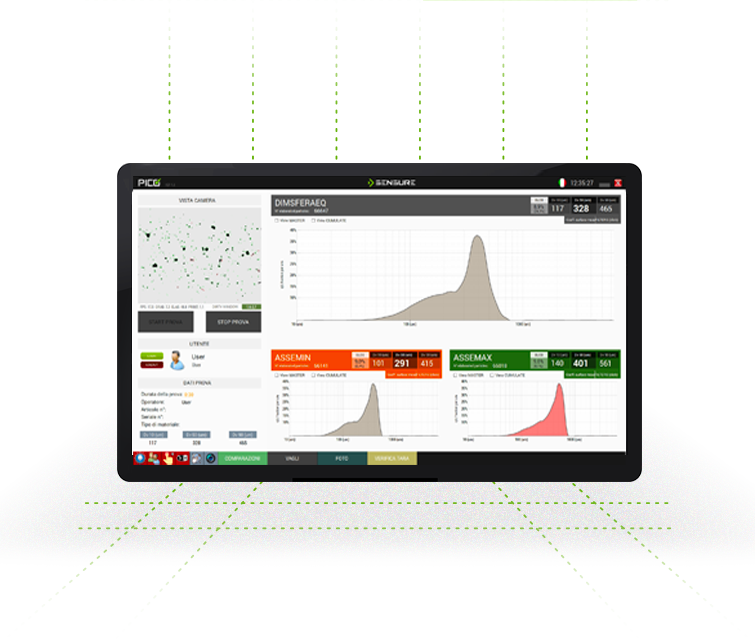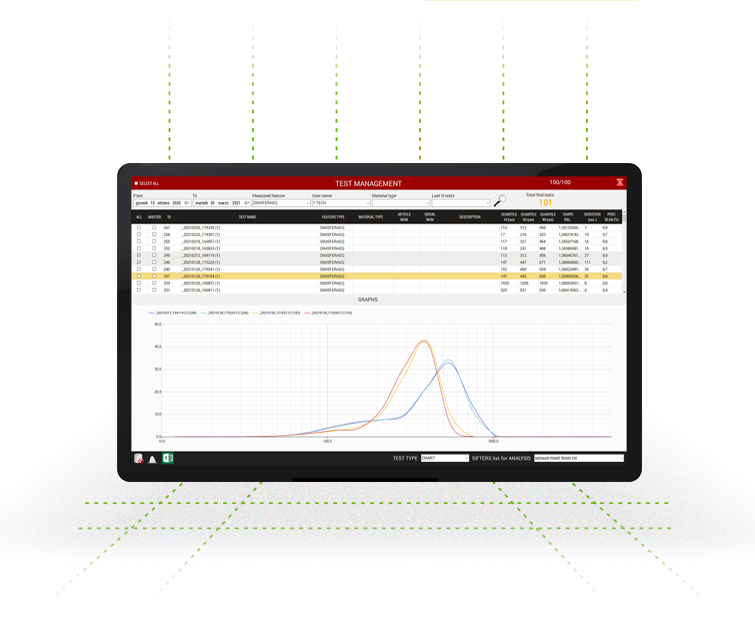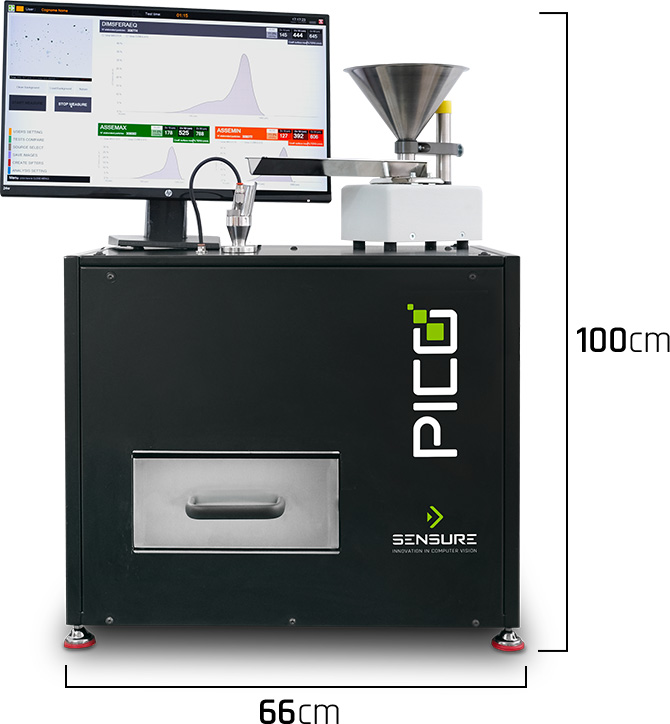







| Measurement range | from 50 micron to 2 mm |
| Sample weight | 5gr – 100gr |
| Measurement time | Proportional to the sample quantity (E.g.: a 7.5gr sample is analyzed in 1min) |
| Repeatability Measure: | 5micron (sample of 20gr, considering the parameter D (0,5)) |
| Type of measurement | Dry, in air flow |
| Accessories Required | None |
| Cleaning system | Manual or by aspirator (estimated time 10s) |
| Measurement parameters |
Distribution graph of the particle size by volume of
|
| Performance |

|
Sieves | Laser |
|---|---|---|---|
| Wide measurement range | |||
| Reproducibility and repeatability | |||
| High resolution for narrow distributions | |||
| Particle shape analysis | |||
| Direct measurement technique | |||
| Reliable detection of oversized grains | |||
| Robust hardware | |||
| Analysis of single particles | |||
| High measurement speed, short measuring times | |||
| Analysis of nanoparticles | |||
| Versatility (No need for adjustment) Different type of materials |
|||
| Cost | |||
| Measurement range | 50 μm - 2 mm | 10 μm - 125 mm | 10 nm - 5 mm |